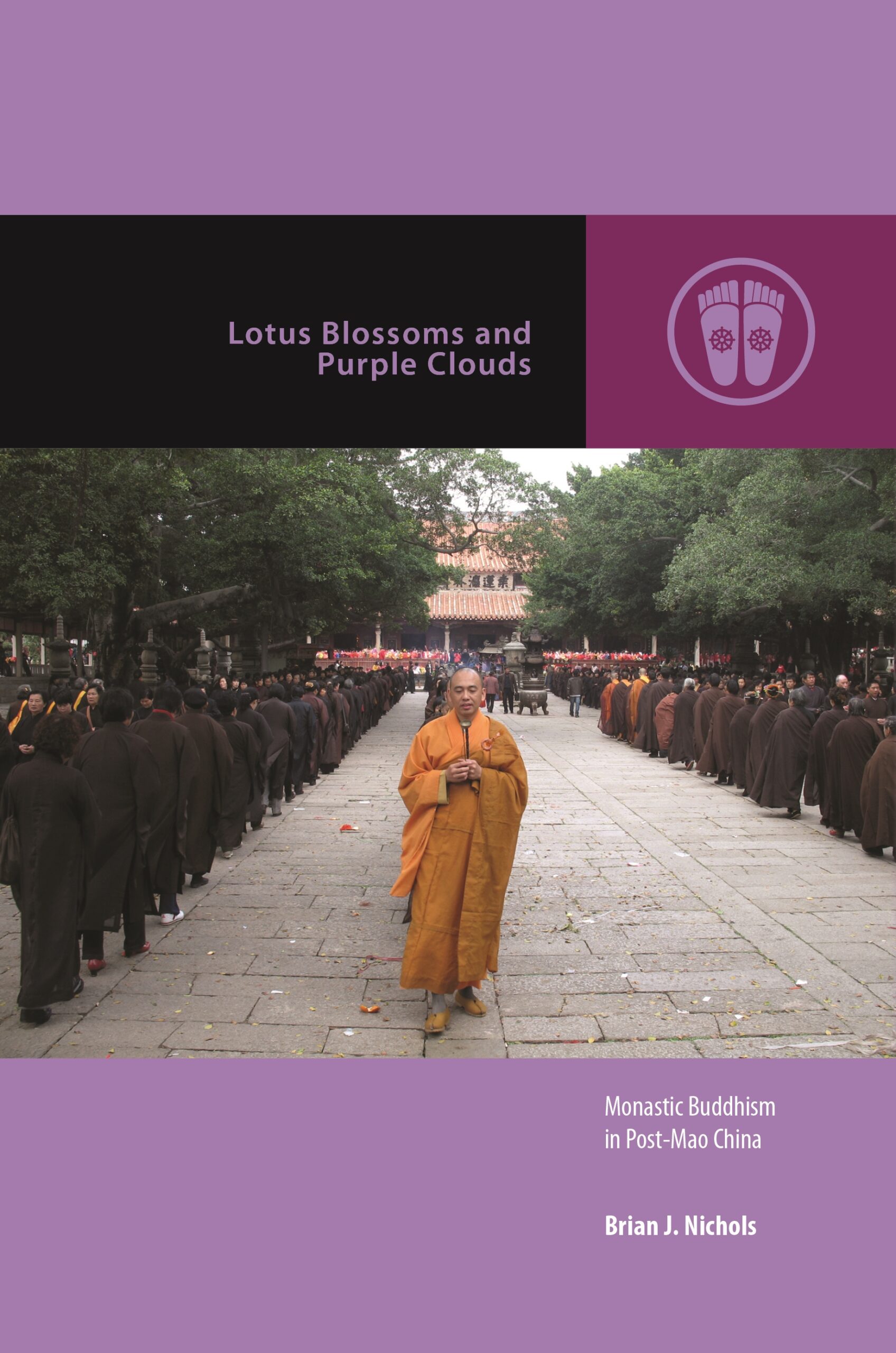Lotus Blossoms and Purple Clouds: Monastic Buddhism in Post-Mao China
- About the Book
-
Southeast China is a traditional stronghold of Buddhism, but little scholarly attention has been paid to this fact. Brian Nichols’s pioneering book, Lotus Blossoms and Purple Clouds, centers on a large Buddhist monastery in Quanzhou and combines ethnographic detail with stimulating analysis to examine religion in post-Mao China. Nichols conducted more than twenty-six months of field research over a fourteen-year period (2005–2019) to develop a re-description of Chinese monastic Buddhism that reaches beyond canonical sources and master narratives to local texts, material culture, oral history, and living traditions. His work decenters normative accounts and sheds light on how Buddhism is lived and practiced. It introduces readers to Quanzhou Kaiyuan Monastery and its community of clergy striving to revive traditions after the turmoil of the Maoist era; the lay Buddhists worshiping in the monastery’s courtyards and halls; the busloads of tourists marveling at the site’s buildings and artifacts, some dating as far back as the Tang Dynasty (ninth century); and the local officials dedicated to supporting—and restricting—the return of religion.
Using gazetteers, epigraphy, and other archival sources, Nichols begins by tracing the history of Quanzhou Kaiyuan Monastery from the Tang Dynasty to the present, noting the continued relevance of preternatural events like the lotus-blooming mulberry trees and auspicious purple clouds associated with the founding of the monastery. The contemporary monastery is then explored through ethnographic participation/observation and interviews. Nichols uncovers a number of unexpected features of Buddhist religious life, making a case for the fundamentally liturgical nature of Buddhist monastic practice—one marked by a program of daily dharaṇi (sacred text) recitation, esoteric traditions, and ancestor veneration. Finally, he presents an innovative spatial analysis of the Quanzhou Kaiyuan Monastery temple that reveals how different groups engage with the site to create a place of religious practice, a tourist attraction, and a community park.
- About the Author(s)
-
Brian J. Nichols, Author
Brian J. Nichols is associate professor of religious studies at Mount Royal University, Calgary.Mark Michael Rowe, Series Editor
Mark Michael Rowe is associate professor in the Department of Religious Studies, McMaster University.
- Reviews and Endorsements
-
- Lotus Blossoms and Purple Clouds is a thoroughly innovative study of the revival of the Quanzhou Kaiyuan Monastery in southeast China. It builds on a significant period of ethnographic investigation, including follow-up longitudinal research, and exhibits sound historical scholarship that makes excellent use of both Chinese and English sources. Brian Nichols has produced by far the most comprehensive study of Han Buddhist monasticism in post–Mao China to date.
—Gareth Fisher, Syracuse University - Thanks to Brian Nichols we have at last a wide-ranging account of a local Buddhist temple in China, one that problematizes official and normative narratives of modern Buddhism and invites us to see what actually happens on the ground.
—Stefania Travagnin, SOAS, University of London - In this study, [Brian Nichols] examines the path of revival and the religious features of Kaiyuan Monastery from diverse perspectives, including those based in history, anthropology, ethnography and Buddhism. Such a highly multidisciplinary research methodology combined with an in-depth analysis of Nichols’s extensive fieldwork record between 2005 and 2019 makes this book a worthwhile read. Any reader interested in contemporary Chinese Buddhism, history or anthropology would find his unique insider observation and participation particularly engaging.
—Jinhui Wu, Reed College, Contemporary Buddhism
- Lotus Blossoms and Purple Clouds is a thoroughly innovative study of the revival of the Quanzhou Kaiyuan Monastery in southeast China. It builds on a significant period of ethnographic investigation, including follow-up longitudinal research, and exhibits sound historical scholarship that makes excellent use of both Chinese and English sources. Brian Nichols has produced by far the most comprehensive study of Han Buddhist monasticism in post–Mao China to date.










